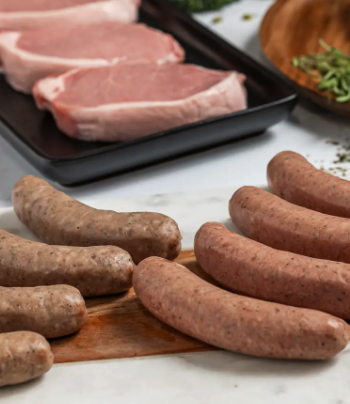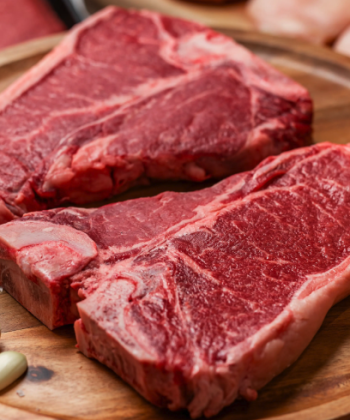
Tequila. Just the word itself conjures up images of lively gatherings, salty rims, and good times. But have you ever stopped to think about the story behind that bottle on the shelf?
Whether you’re sipping it neat or mixing it into a margarita, tequila has a rich history and a fascinating process. Not all tequila is created equal, though. What makes one bottle command hundreds of dollars while another sits in the budget section?
In this article, we’ll explore the intricacies of tequila making and uncover what really separates premium tequila from the standard variety.
So, grab a seat and a glass—this is going to be an eye-opener. We’ll dive into the ingredients, the production process, the aging methods, and, of course, the flavor differences. By the end of this article, you’ll know exactly what sets premium tequila apart and why it’s worth every sip.
The Origins: What Is Tequila?
To understand what makes premium tequila special, we first need to understand what tequila is. Tequila is a distilled spirit made from the blue agave plant, primarily grown in the region of Jalisco, Mexico. Best tequila like clase azul and others come from this area, thanks to its rich volcanic soil.
The Role of Blue Agave
All tequila, whether premium or standard, starts with blue agave. However, not all agave is treated the same way. In premium tequila, only the finest, most mature agave plants are selected. These plants are typically grown for 7-12 years before they are harvested, ensuring they have the ideal sugar content. Standard tequilas, on the other hand, often use younger agave plants, which can result in a less complex flavor profile.
| Tequila Type | Agave Maturity | Flavor Impact |
| Premium | 7-12 years (fully mature) | Richer, more complex flavors |
| Standard | Younger (less mature) | Simpler, less developed flavors |
Production Process: Where the Magic Happens
Now, this is where things start to get interesting. The way tequila is made plays a massive role in determining its quality. Let’s break it down step by step.
Harvesting and Cooking
In premium tequila production, the hearts of the agave plants, called piñas, are harvested by hand. The piñas are then cooked slowly in traditional stone ovens, sometimes for days. This slow cooking allows the agave to develop a richer, deeper flavor.
In contrast, standard tequila may be produced using autoclaves, which are high-pressure steam ovens. This speed up the cooking process but at the expense of flavor development. The autoclave method produces a more neutral taste, which is often why cheaper tequilas lack the depth of their premium counterparts.
| Cooking Method | Tequila Type | Flavor Quality |
| Stone Oven (Traditional) | Premium | Richer, deeper flavors |
| Autoclave (Steam Oven) | Standard | Less complex, neutral flavors |
Extraction: Traditional vs. Modern
Once the agave is cooked, the sugars need to be extracted. Premium tequilas typically use a Tahona, a massive stone wheel that slowly crushes the agave to release its juices. This traditional method is labor-intensive but preserves the integrity of the agave’s natural flavors.
Standard tequilas, on the other hand, often use modern diffusers—a quicker, industrial process that extracts more juice from the agave but sacrifices some flavor in the process. Diffusers are common in mass production and are a telltale sign of a lower-quality product.
Fermentation and Distillation: The Heart of Tequila
Once the sugars are extracted, fermentation begins. For premium tequila, this step is done with natural, open-air fermentation using wild yeast. This method takes longer but contributes to a more complex and nuanced flavor profile.
Standard tequilas may use industrial yeast and speed up the process, which leads to a more basic, one-dimensional taste. Premium producers focus on quality, letting the process take its time, while standard tequila makers prioritize speed and volume.
Distillation: Refining the Spirit
Tequila is distilled twice to refine the alcohol and remove impurities. In premium tequila, this distillation is carefully monitored, with a focus on preserving the rich flavors of the agave. Many producers even distill their tequila in copper pot stills, which further enhances the flavor.
Standard tequilas, meanwhile, might be distilled in large industrial stills, resulting in a less refined product. The difference is often noticeable in the final taste—premium tequila is smoother, while standard tequila can be harsher on the palate.
| Tequila Type | Fermentation Method | Distillation Process | Resulting Flavor |
| Premium | Open-air, natural yeast | Small-batch, copper pot stills | Smooth, rich, and refined |
| Standard | Industrial yeast | Industrial, large-scale stills | Harsh, basic, and one-dimensional |
Aging: Blanco, Reposado, and Añejo
Tequila is categorized based on how long it has been aged. The aging process is a major factor that separates premium tequila from standard.
Blanco (Silver)
Blanco tequilas are either unaged or aged for less than two months. Premium blancos are known for their purity and the authentic taste of the agave. Even though they aren’t aged, a good premium blanco can be incredibly smooth and flavorful.
Standard blancos often taste harsher due to shortcuts taken during production, like using younger agave or rushing fermentation.
Reposado (Rested)
Reposado tequilas are aged for two months to a year in oak barrels. Premium reposados are often aged in high-quality barrels that add layers of vanilla, caramel, and spice to the tequila. The longer, careful aging allows the flavors to meld beautifully.
In contrast, standard reposados might be aged in used barrels or for the minimum required time, resulting in a less balanced flavor.
Añejo (Aged)
Añejo tequilas are aged for one to three years in oak barrels, giving them a deep, rich flavor. Premium añejos are treated almost like fine whiskey, aged in top-notch barrels and monitored carefully. These tequilas develop complex flavors of dried fruit, chocolate, and even tobacco.
Standard añejos, though aged, may not exhibit the same depth of flavor due to lower-quality production methods and barrels.
| Tequila Category | Aging Time | Premium Tequila Flavor |
| Blanco (Silver) | Less than 2 months | Smooth, pure agave flavor |
| Reposado (Rested) | 2 months – 1 year | Balanced, with hints of vanilla |
| Añejo (Aged) | 1 – 3 years | Complex, deep flavors |
Conclusion
So, what separates premium tequila from standard? It’s a combination of factors, starting with the maturity of the agave, the traditional methods used for production, the patience in aging, and, of course, the artistry in crafting each bottle. Premium tequilas are made with care, and every step of the process is designed to bring out the best flavors, resulting in a smoother, richer, and more enjoyable experience.
Standard tequilas, while perfectly fine for casual drinking or cocktails, simply don’t undergo the same level of craftsmanship. In the end, you’re not just paying for a bottle of alcohol—you’re paying for tradition, skill, and time. And when it comes to premium tequila, every sip tells a story worth savoring.



